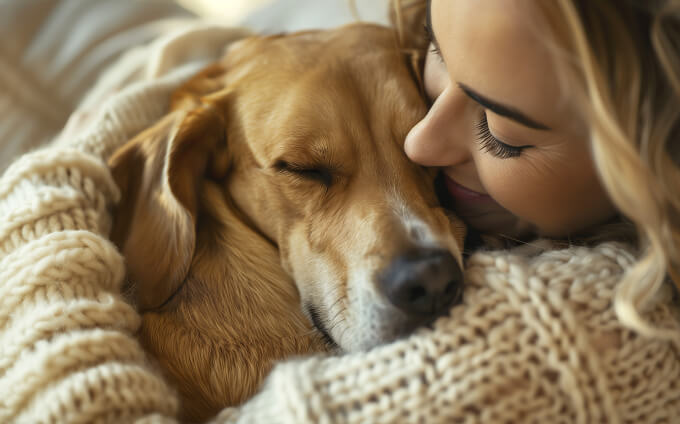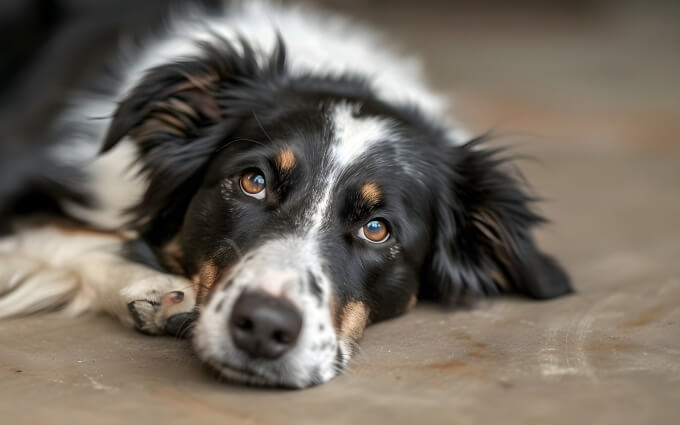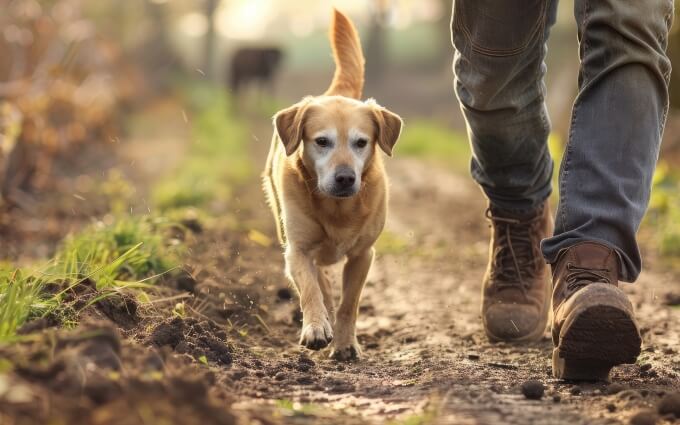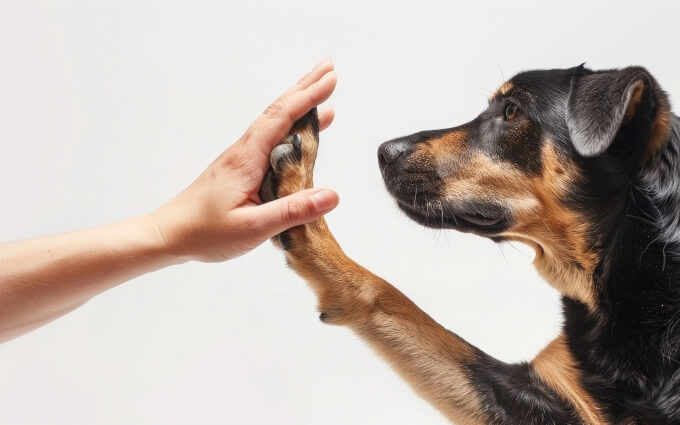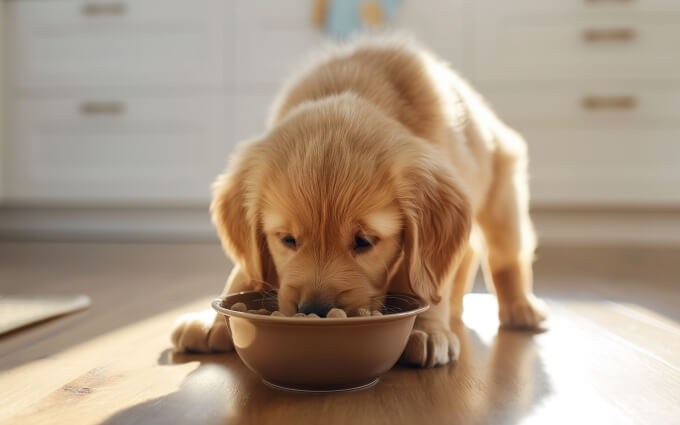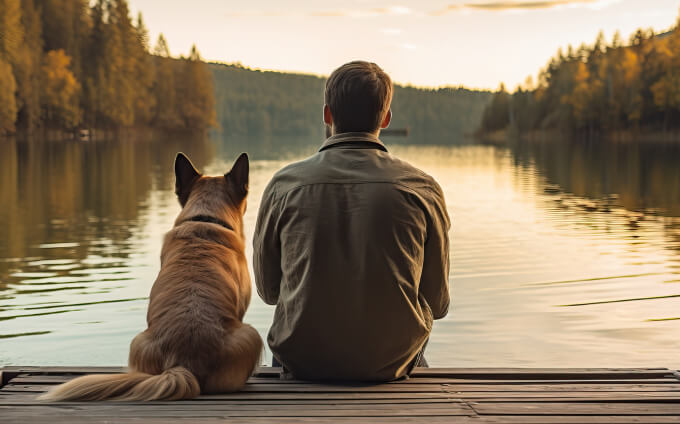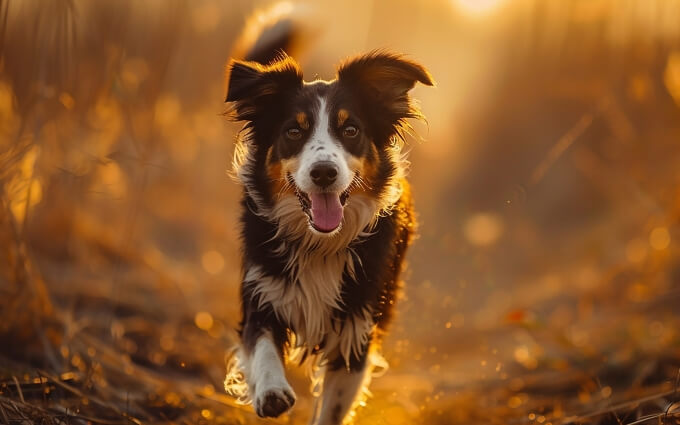- Home
- Dog Behavior
- Why Does My Dog Put Its Head on Me? Understanding the Behavior
Why Does My Dog Put Its Head on Me? Understanding the Behavior
Ever wondered why your dog puts its head on you? This guide dives into the reasons behind this endearing behavior, from seeking comfort to showing love.

- 28

Understanding Your Dog's Behavior
Dogs have a variety of ways to communicate with their humans, and one of the sweetest is when they rest their heads on you. While this can be an adorable moment, there's more to it than meets the eye. Your dog may be trying to tell you something important.
Seeking Comfort
One of the most common reasons your dog puts its head on you is to seek comfort. Just like humans, dogs can feel stressed, anxious, or scared. By resting their head on you, they find solace and reassurance. This behavior is often seen during loud noises like thunderstorms or fireworks, where your presence provides a sense of security.
Expressions of Affection and Bonding
Dogs are incredibly affectionate animals, and putting their head on you is a way of showing love. This act signifies trust and a strong bond between you and your furry friend. When your dog lays its head on you, it's their way of saying they love you and feel safe with you.
Building a Stronger Connection
Physical contact is crucial for dogs, just as it is for humans. When your dog rests its head on you, it's enhancing the bond you share. It's their way of being close and feeling connected to you, much like how humans hold hands or hug.
Protection and Guarding
In some cases, your dog might rest its head on you as a form of protection. Dogs are naturally protective of their loved ones. If they sense a potential threat, they may lean on you or rest their head on you to show they are there to guard and protect. This behavior can be particularly noticeable in new or unfamiliar situations.
- Assess the environment for potential stressors.
- Watch for additional signs of protective behavior like growling or alertness.
Attention Seeking
Your dog might also be putting its head on you simply to get your attention. Whether they want to be petted, need a walk, or it's time for dinner, this behavior is an effective way for them to communicate their needs. Dogs quickly learn that this action gets a response from you, whether it's a pat on the head or you getting up to fill their bowl.
How to Respond
If your dog is using this behavior to seek attention, it's essential to recognize their needs. Ensure they are getting enough exercise, mental stimulation, and affection throughout the day. While it's crucial to meet their needs, be cautious not to reinforce demanding behavior inadvertently. Balance is key.
Health and Wellness
Sometimes, a dog resting its head on you could be a sign of them feeling unwell. If your dog is more clingy than usual and displays other signs of illness such as lethargy, loss of appetite, or changes in behavior, it might be time to consult a veterinarian. Dogs often seek comfort from their owners when they are not feeling their best.
Signs to Watch For
- Changes in eating or drinking habits.
- Unusual lethargy or lack of energy.
- Physical symptoms like vomiting or diarrhea.
Embrace the Moment
At the end of the day, when your dog puts its head on you, it's a beautiful expression of their love and trust. Cherish these moments as they signify a deep bond and mutual affection. By understanding the reasons behind this behavior, you can respond appropriately and strengthen your relationship with your beloved pet.
So, next time your dog rests its head on you, give them a gentle pet, speak soothingly, and appreciate the special connection you share.
Frequently Asked Questions about Dogs Putting Their Head on You
Why does my dog put its head on me?
Dogs often rest their head on you as a sign of affection, comfort, or seeking attention.
Is my dog showing dominance by putting its head on me?
In most cases, it's not about dominance but about bonding, reassurance, or feeling safe with you.
Why does my dog rest its head on my lap?
This behavior usually means your dog feels close to you and enjoys physical contact for security and love.
Should I be concerned if my dog frequently puts its head on me?
No, it's generally a normal and affectionate behavior unless accompanied by signs of discomfort or illness.
How can I respond when my dog puts its head on me?
You can gently pet or reassure your dog, as this strengthens your bond and makes your pet feel secure.
- 28
 Michelle Torring
Michelle Torring
Michelle is a passionate dog owner who spends most of her free time with her 6-year-old golden retriever, Bella. The two are a familiar sight in the neighborhood, often seen on long walks in the park or at the beach. Michelle loves training Bella in agility and they often compete in local competitions where Bella impresses with her speed and agility. Every Sunday, Michelle organizes playdates for dogs in the neighborhood where both dogs and owners can socialize and learn from each other. To Michelle, Bella is not just a dog, but a beloved family member and faithful companion.
-
Dog Behavior
 Does My Dog Know I Care About It?
Does My Dog Know I Care About It?Discover the ways your dog shows it knows you care and how you can reinforce that loving bond through simple actions and daily interactions.
 Cassandra DalgaardAug 05, 202444
Cassandra DalgaardAug 05, 202444 -
Food & Nutrition
 The Best Foods to Boost Your Dog's Immune System
The Best Foods to Boost Your Dog's Immune SystemTo keep your dog healthy and resilient, fueling their immune system with the right foods is key. In this post, we'll cover the top nutrient-packed foods that can give your dog's immune system the support it needs, helping them fend off illness and stay energetic.
 Marcin SolgaardOct 04, 20249
Marcin SolgaardOct 04, 20249 -
Dog health
 Which Emotions Do Dogs Actually Experience? Understanding Your Dog's Emotions
Which Emotions Do Dogs Actually Experience? Understanding Your Dog's EmotionsDogs experience a variety of basic emotions similar to those of a young child. Learn about the emotions your dog truly feels, how they express them, and what it means for your relationship.
 Cassandra DalgaardJul 30, 202478
Cassandra DalgaardJul 30, 202478 -
Dog Behavior
 Why Your Dog Ignores You and How to Change It
Why Your Dog Ignores You and How to Change ItIs your dog ignoring you? Explore the reasons behind this behavior and actionable steps to bring back the focus, from training techniques to environmental adjustments.
 Marcin SolgaardJul 16, 202439
Marcin SolgaardJul 16, 202439 -
Tips & Tricks
 How to Train Your Dog to Walk Off-Leash
How to Train Your Dog to Walk Off-LeashThis guide will walk you through everything you need to know, from essential commands to mastering off-leash walks even in distracting environments
 Marcin SolgaardJul 02, 202451
Marcin SolgaardJul 02, 202451 -
Tips & Tricks
 How to Train Your Dog to Give Paw
How to Train Your Dog to Give PawTeaching your dog to give paw is a fun and rewarding experience that strengthens your bond. This guide walks you through the process with tips, tricks, and plenty of paw-sitive reinforcement.
 Marcin SolgaardApr 11, 202441
Marcin SolgaardApr 11, 202441 -
Puppies & Young dogs
 How to Puppy-Proof Your Home: A Complete Guide
How to Puppy-Proof Your Home: A Complete GuideBringing a new puppy home is thrilling, but keeping them safe means some serious puppy-proofing. This guide covers everything from securing hazardous items to creating a puppy-friendly zone, making your home a safe haven for your curious new companion.
 Michelle TorringOct 10, 202412
Michelle TorringOct 10, 202412 -
Food & Nutrition
 How to Choose the Right Diet for Your Allergic Dog
How to Choose the Right Diet for Your Allergic DogFind out how to select the perfect diet for your dog with allergies. Learn about elimination diets, hypoallergenic foods, and the best ingredients to keep your furry friend healthy and happy.
 Marcin SolgaardJun 09, 202427
Marcin SolgaardJun 09, 202427 -
Tips & Tricks
 Are You Ready for Life with a Dog? Everything You Need to Know
Are You Ready for Life with a Dog? Everything You Need to KnowThis guide helps you determine if you're ready for a dog by exploring the responsibilities, financial requirements, and lifestyle changes necessary for successful dog ownership.
 Marcin SolgaardJul 31, 202433
Marcin SolgaardJul 31, 202433 -
Tips & Tricks
 How to Teach Your Dog to Come When Called
How to Teach Your Dog to Come When CalledThis guide walks you through the process, from selecting the right command to dealing with distractions, ensuring a strong recall every time.
 Marcin SolgaardJul 10, 202448
Marcin SolgaardJul 10, 202448

